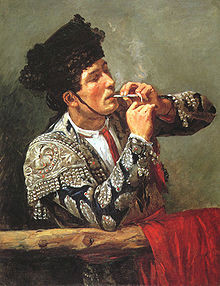Tobacco was consumed long before the arrival of the first European settlers in early America. With the arrival of the Spanish, tobacco was also introduced to the Europeans and quickly became a lucrative, much-traded commodity. Tobacco then soon spread as a popular stimulant. After the Industrial Revolution, cigarettes became enormously popular worldwide.
Tobacco in America before Columbus
Tobacco was first discovered by the indigenous people of Mesoamerica and South America and then first became known in Europe and soon to the rest of the world.
By the time European settlers brought tobacco to Europe, tobacco had long been part of the culture in the Americas. Some tribes historically carried tobacco in pouches as a readily accepted trade item and smoked it in pipe ceremonies. In this way, treaties and agreements were settled as well as access to the spiritual world was sought.
What other uses did tobacco have apart from use in sacred ceremonies?
Besides its use in spiritual ceremonies, tobacco was also used for the medical treatment of physical ailments. For example, it was used as a painkiller for earaches and toothaches, or it was an important ingredient in incense mixtures to treat colds. In addition to its traditional medicinal use, tobacco was also used as currency in trade between Native Americans and colonists from the 17th century onwards.
Is tobacco still used in ceremonies today?
The religious use of tobacco is still common among many indigenous peoples, especially in the Americas. Among the Cree and Ojibwe in Canada and the north-central United States, it is offered to the Creator, associated with prayers and smoked in sweat lodges and pipe ceremonies.
What happened first when tobacco reached Europe?
Of the four American plants that spread to the rest of the world through exchange - potato, corn, tomato and tobacco - tobacco is the only one that was used in all countries. There are Greek and Roman accounts of smoking hemp seeds, and a Spanish poem from around 1276 mentions the energetic effects of lavender smoke. Tobacco, however, was completely unknown to Europeans before the discovery of the New World.
They had seen smoking men with half-burnt wood and certain herbs in their hands (put on a certain leaf) on their journeys to America, and the effect of the smoke consumed in this way could not be overlooked - the men appeared drugged and intoxicated. It was said that, in addition, they felt no fatigue. The rolled dry leaves filled with dry herbs were called tabacos. The reports tell of Spaniards on the island of Española who had become so accustomed to smoking that they were reprimanded for it and advised to stop this vice. But they claimed that they could no longer stop.
Tobacco in modern history
America has shaped the modern history of tobacco like no other country in the world. In the middle of the 19th century, chewing tobacco was very common in Latin America.
Was tobacco smoked from the beginning?
This habit had been widespread among the population working as farmers in the North and South of America even before the war. Soldiers had found the tobacco chewing as a comfort in the field and continued to roll it in their mouths after returning to their homes. Outside, people spat without offending other people with it. In houses and public buildings, there were spittoons to get rid of the chewing gum. Even in the pews of modern churches these familiar conveniences were to be found.
How widespread was the use of tobacco?
An observant traveller of the South reported in the mid-19th century that 70% of all persons over the age of twelve, male or female, used tobacco in some form. Women could be seen sitting at the doors of their huts, barefoot, in their dirty one-piece cotton dresses, their chairs tilted back. They always smoked their pipes made from corncobs or stuck the tobacco in reed stalks or goose quills to smoke it that way.
Until the last decade of the 19th century, the tobacco taxes accounted for one third of the internal revenue collected by the United States government.
When did cigarettes really take off?
After the American Civil War, the tobacco industry had to struggle to adapt. The demand changed. As in Europe, there was not only a desire for snuff, pipes and cigars, but also for cigarettes.
With the changing demand and labour, James Bonsack, a keen craftsman, developed a machine in 1881 that revolutionised cigarette production. The machine crushed the tobacco, then dropped a certain amount of the tobacco into a long paper tube, which the machine then rolled up. At the end, the machine cut the resulting roll into individual cigarettes. This machine worked at thirteen times the speed of a human cigarette roller. However, it was extremely large compared to our modern electric cigarette injectors.
These developments led to a huge growth in the tobacco industry that continued well into the 20th century. However, scientific revelations about the health effects of smoking and exposure of the use of chemical additives by tobacco companies put a huge brake on the trend.
Can cigarette-injection at home be called the last great development in tobacco history?
Today, tobacco is found worldwide as a stimulant, even though we have known for at least 50 years that smoking can kill. Nevertheless, millions of people continue to smoke and thousands start anew every year.
Some among the smokers, try to make themselves at least more independent and avoid the constant price increases of cigarettes. Today, tobacco can also be bought directly from small producers and, thanks to modern, fully automatic cigarette machines, can also be processed into high-quality cigarettes.
Reference: Adapted from Wikipedia. For the use and distribution of this text or parts of it, please observe the valid licence conditions: https://creativecommons.org/licenses/by-sa/3.0/deed.de

